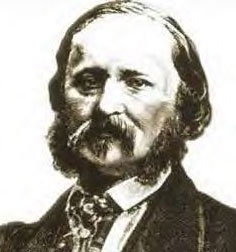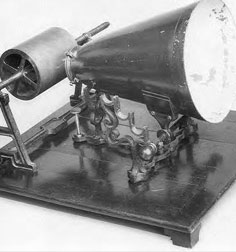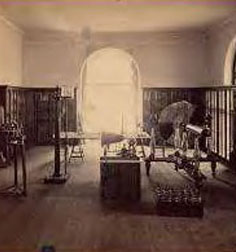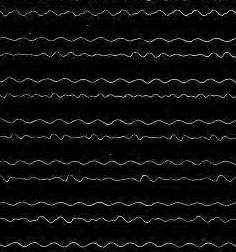
Picturing Sound: Édouard-Léon Scott de Martinville (1817–1879)
French typographer Édouard-Léon Scott de Martinville invented the phonautograph, a machine to make a visual record of sound waves traveling through the air. First patented in 1857 and revised repeatedly, his design would influence the direction of sound studies. The phonautograph was the first device to imitate the structure and function of the human ear.
Scott intended the phonautograph to transform sound into a kind of writing, as a means to preserve and recall it. The recordings were not intended for listening. They showed sound as wavy lines traced through a coating of soot on glass or paper. The machine created the lines with a vibrating stylus, set in motion by a flexible membrane that responded to sound waves—similar to how an eardrum works.
Paris instrument maker Karl Rudolph Koenig constructed and sold a small number of Scott’s phonautographs beginning in 1859. Joseph Henry, secretary of the Smithsonian, purchased this phonautograph for the institution in 1866 from Koenig for five hundred francs (approximately one hundred dollars at that time).
Alexander Graham Bell used the phonautograph pictured here to study sound at the Institute of Technology (now MIT) in Boston. (Courtesy of MIT Museum)
Sound waves are depicted here on a phonautograph recording from an 1865 catalog of Karl Rudolph Koenig’s acoustical instruments. (Courtesy of Smithsonian Institution Libraries)




